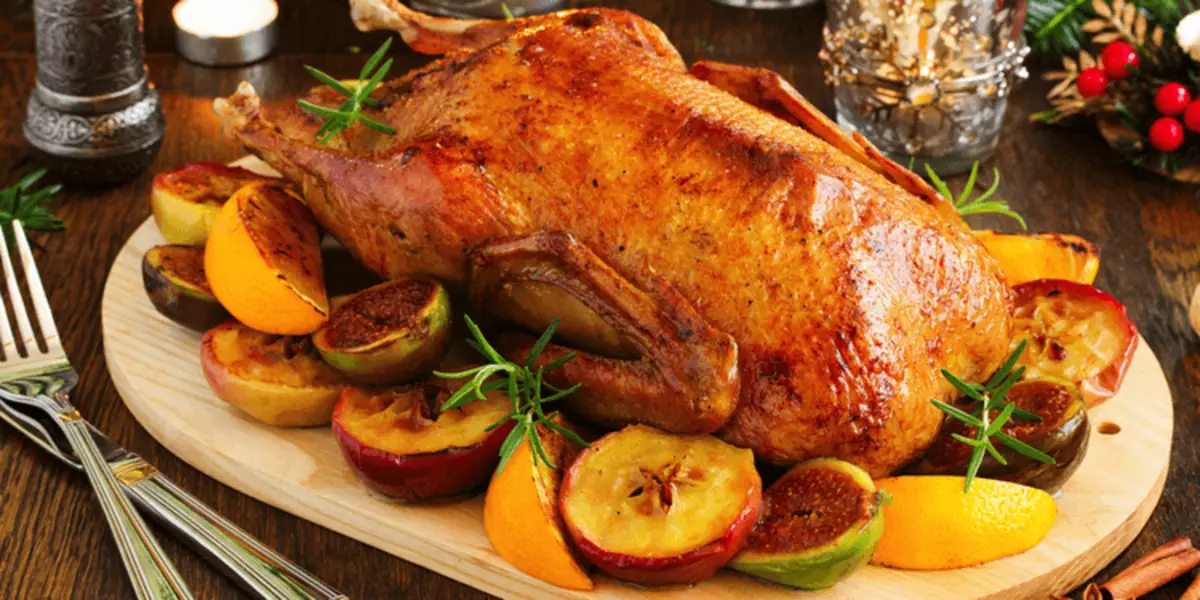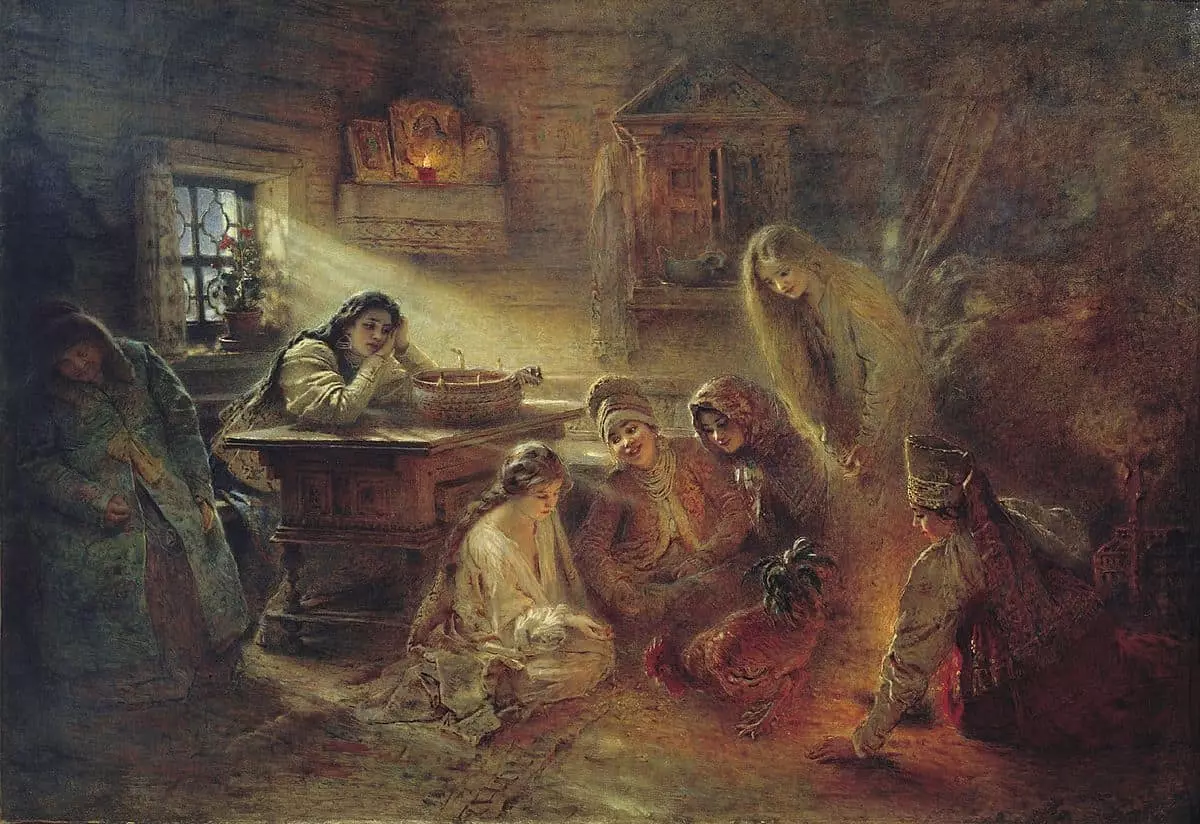A solid week (in a different one is called omnivorous) - so in the Orthodox calendar is a week when believers can afford not to adhere to a strict post. In these 7 days, it is allowed to eat in food former products (that is, meat, offal, animal fat, eggs and dairy products). And you can even talk even on Wednesdays and Fridays - traditional lean days.

When there are solid weeks in 2021
In just a year, the Orthodox traditionally falls five solid weeks - that is, five weeks of full nutrition for Christians without having to limit themselves to certain products.Find out what awaits you today - a horoscope for today for all zodiac signs
By numerous subscribers requests, we have prepared an accurate horoscope application for a mobile phone. Forecasts will come for your zodiac sign every morning - it is impossible to miss!
Download free: Horoscope for every day 2020 (Available on Android)
In the current 2021, continuous weeks occur in the following numbers:
- Sky - from January 6 to 18.
- Week about Mytar and Pharisees (She always falls out 14 days before the start of the Great Post) - from February 21, 2021.
- Cheese saddis (otherwise called the passenger week) - precedes a great post from March 8 to March 13, 2021.
- Easter saddimians (light) - After the bright Sunday of Christ from March 2 to May 7, 2021.
- Troitskaya sadmitsa - Begins after the Holiday Trinity, from June 21 to 28, 2021.
Characteristic of solid sadmits
Now let's briefly wonder each of the five weeks of the Orthodox calendar - which one has features.
Sky
The batch week begins from the day of the Nativity of Christ and lasts to the Epiphany Christmas Eve. DAYS OF THE SCHOOLS Also known as "Holy Evenings" and are timed to the memory of the appearance of Jesus Christ.
For the first time, the tradition of celebrating the shields occurs in the 4th century. Then the first Christians of Greek origin organized mass folk festivities, which lasted two weeks from Christmas. When the Christian religion was approved in Russia, many pagan traditions have been preserved, such as rituals of rudeness, dusty dances and fortune telling.
And although representatives of the Orthodox Church initially quite categorically expressed the Slavic pagan rites held during the shield, but then invented, how to "decide" this problem: they offered to the baptism of people to dug into the holes in order to wash off their sins committed for Sight time.

The rite of rude - that is, dressing up in special clothes and the subsequent "bonding" - walking across the courtyards, the sneaking of ritual songs-car beads is alive today. Similarly, as well as soda fortune telling, especially popular in young girls who want to know when fate will send them the narrowed.
Week about Mytar and Pharisees
Sedmian about Mytar and Pharisees - acts as a kind of preparation before the great post. What does she symbolize and why does she have such a strange name?To answer this question, you need to turn to the Christian Gospel, which is abounding short, but instructive priest stories. They were told by Jesus Christ, holding his sermons.
One of the parable is also called as this week - "Ohtar and Pharisees". It describes two people:
- Mytar - that is, the collector of the filings (in ancient society to the sooters treated disregardly);
- And Pharisee is a representative of state supremacy, authorities.
Parable tells about one day, when both - Mytar and Pharisees, such different people, but came to the same temple with the aim of rearing prayer to God. Pharisay, praying, expressed his gratitude to the Almighty that he was not a bad man: the offender, robber, adultere or such as the sootar. He considered himself spiritually developed, as he fasted twice a week, and also gave his tenth of his income for the benefit of society.
As for Mytar, he stood aside, he was even afraid to raise his eyes to heaven, but desperately prayed to the Lord, asking him about mercy. Jesus Christ, telling this parable, made the emphasis on the fact that from the temple, Mytar came out more justified by God than the Pharisee, because it is impossible to undeclose himself - since he will be humiliated, and the one who degrads himself, on the contrary, is raised. In three rows, the gospel says so much, they have such a great meaning for a believer. The same meaning has a saddemian about Mytar and Pharisees.
Cheese saddis
The cheese week - acts as the last preparatory week before the great post. But although on this solid sadmice, you can not comply with the post on the third and fifth days of the week, the meat should be excluded from its diet.
Before the cheese saddemic, a meat suggestion occurs, the subject of which is a terrible court. And completes its chearrow week (or forgiven Sunday).
Throughout the cheese week, it is impossible to be married. And on Wednesday and Friday there is no traditional liturgy. But from the medium, the reading of a good prayer dedicated to St. Ephraim Sirin begins. At this time, you should think about the symbolism of the upcoming post, set your frames for him this year, and also prepare for the Sundays forgiven.

The priests point to the need to refrain over these seven days in any desires: in food, fun, carnal uteuhas, and so on. Although for a truly believer Christian a measure is always important.
Easter sadmitsa
It is also called the bright week and it takes the first seven days from the Easter holiday, lasts until the fomine of the week. At this time, daily after church worship, believers, it is supposed to bypass the temple, fulfilling a festive tender move with a sober - a special ringing of bells for Easter.From the date of the bright Sunday of Christ and before his return (comes on the fortieth day on the Holiday ascension of the Lord) Orthodox Christians should welcome each other when meeting the phrases "Christ Risen!" For which they say "truly resurrected!".
A light solid saddemic is a period when believers can deal with themselves to fall into what their soul wants. In addition, now there is no need to commit earthly bows in church service. Morning and evening prayers are replaced by Easter clock (that is, by special prayers associated with this holiday).
Troitskaya sadmitsa
The solid Trinity Week begins from the day of the Holy Trinity. On this day, a solemn day service is performed in the temples, then the evening is served, and the crankshaftful prayers are read on it. Troitskaya sadmitsa precedes Petrov post.
Since ancient times, it has developed a special attitude to this 7 days: the week was known as "RUSSIAL", "Iron" or "green shints". Numerous customs, beliefs are connected with Trinity Sedmia. So, according to the most common, it is impossible to work on Earth at this time, you should be very careful on natural reservoirs, should not be far from your village.
Earth cannot be touched, allegedly, because at that time it celebrates his birthday. And the ban on swimming and leaving the native village is due to believing that during the green densities, the mermaids are selected from the water and strive by any ways to cause harm to people.
As for the opinion of Orthodox priests, they do not indicate any special limitations associated with the Trinity Week. It is forbidden to do only what causes the human soul harm (as well as in all other days). Despite this, it is also desirable to minimize labor at the specified period, but with the only goal to expect more time for spiritual affairs: prayers, visits to the temple, reading spiritual literature and such actions.
Finally, browse the video on the topic:
